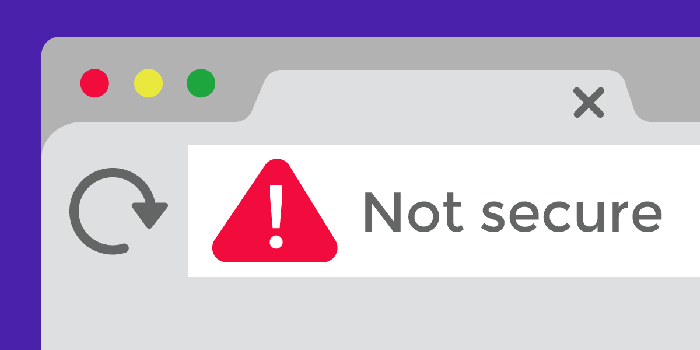Every online user has run into a website page with a not secure flag on it in their online journey. An estimated 65% of people who see this warning will not return to that site. As an online business owner, it is critical to understand what a not secure website means and how it affects your operational capacity.
Not Secure Website: What does it mean?
First, your website does not have secure encryption. This tag also means that it has a lot of vulnerable points that hackers can exploit. No secure connection means that this webpage exposes its users to risk in any interactions within the website. Anything from supplying bank details to sensitive data can be stolen or diverted in an insecure website.
The not secure warning usually appears on websites that do not have TSL/SSL certificates that support the HTTPS protocol. It is also common for websites to enable these protocols on some pages and not have them on others. Essentially, some pages may be encrypted while others are still insecure. You can fix this problem by obtaining an SSL certificate.

The not secure warning usually appears on websites that do not have TSL/SSL certificates that support the HTTPS protocol. It is also common for websites to enable these protocols on some pages and not have them on others. Essentially, some pages may be encrypted while others are still insecure. You can fix this problem by obtaining an SSL certificate.
This warning means that you have zero privacy when browsing through insecure pages. Your information is vulnerable to theft, modification, and duplication. Nothing you do on the website is private-everything can be monitored and recorded.
You are at risk if you frequent public internet networks. Insecure websites make it easy for local hackers to access public computer networks. They can get your information, see what you are searching for, and monitor your online footprint. These hackers can use this data as ransomware or for many malicious uses.
How can website owners and online users maneuver through insecure websites?
What to Do When a Website is Not Secure?
A not secure warning means the specific website does not have proper encryption. It is vulnerable and has a high-risk factor. Any information you put on this website is in plain text, which can easily be stolen and used for malicious purposes. Hackers are always looking for insecure websites. Note that search engines can not guarantee the safety of your information on these sites.
If you come across such a website, it is critical to ensure you don’t provide any sensitive or personal information. You should not use data such as bank information and login details on such sites. It is risky if you use the same passwords for multiple accounts. Many people do not use multi-factor authentication, so hacking their accounts weighs on knowing a password.
A more direct approach would be manually replacing the HTTP in the URL with HTTPS. This protocol makes the site secure and encrypts the data interactions. Changing the URL will also allow your browser to have a safe line of interaction with the website and keep your information safe.
If it is a site that you visit often, the best approach would be to open a communication line. The value of this is to constantly update when the not secure warning appears on your site. This communication will allow owners to update software regularly and take the necessary precautions.
Online Business owners are also mandated to ensure their websites do not expose their users to cyber attacks. They can easily do this by following a few easy steps;
- Getting a TSL/SSL certificate is the first and most critical step, especially for new website owners. This certificate facilitates proper encryption protocols and provides a secure connection for users.
- It is also advisable to deploy multi-factor authentication to all your password-protected areas. Having two or more security levels is a way to ensure your site is impenetrable. Multi-level encryption also gives users the peace of mind that the information they relay to your website stays in the right hands.
- Emphasize to your website developer the need to assess whether your site supports the HTTPS protocol-If your site supports it partially, research on steps to help you configure HTTPS throughout your site.
- Ensure you invest in software updates. Using outdated software is one of the primary reasons why many websites underperform. Most website owners are unaware that updates come with improved safety protocols. Regularly updating your software will ensure you maintain compatibility and run a secure network.
These are four easy steps for website owners to ensure their sites do not get flagged as insecure. Note that most users will not return to a not secure website. This issue will make you lose traffic and potential revenue on a massive scale.
Verdict
Having a secure website is critical if you want to guarantee business success. It is a way to establish and maintain the proper practice, and it gives your users confidence that their information is safe. For secure website, Try cWatch Website Security





